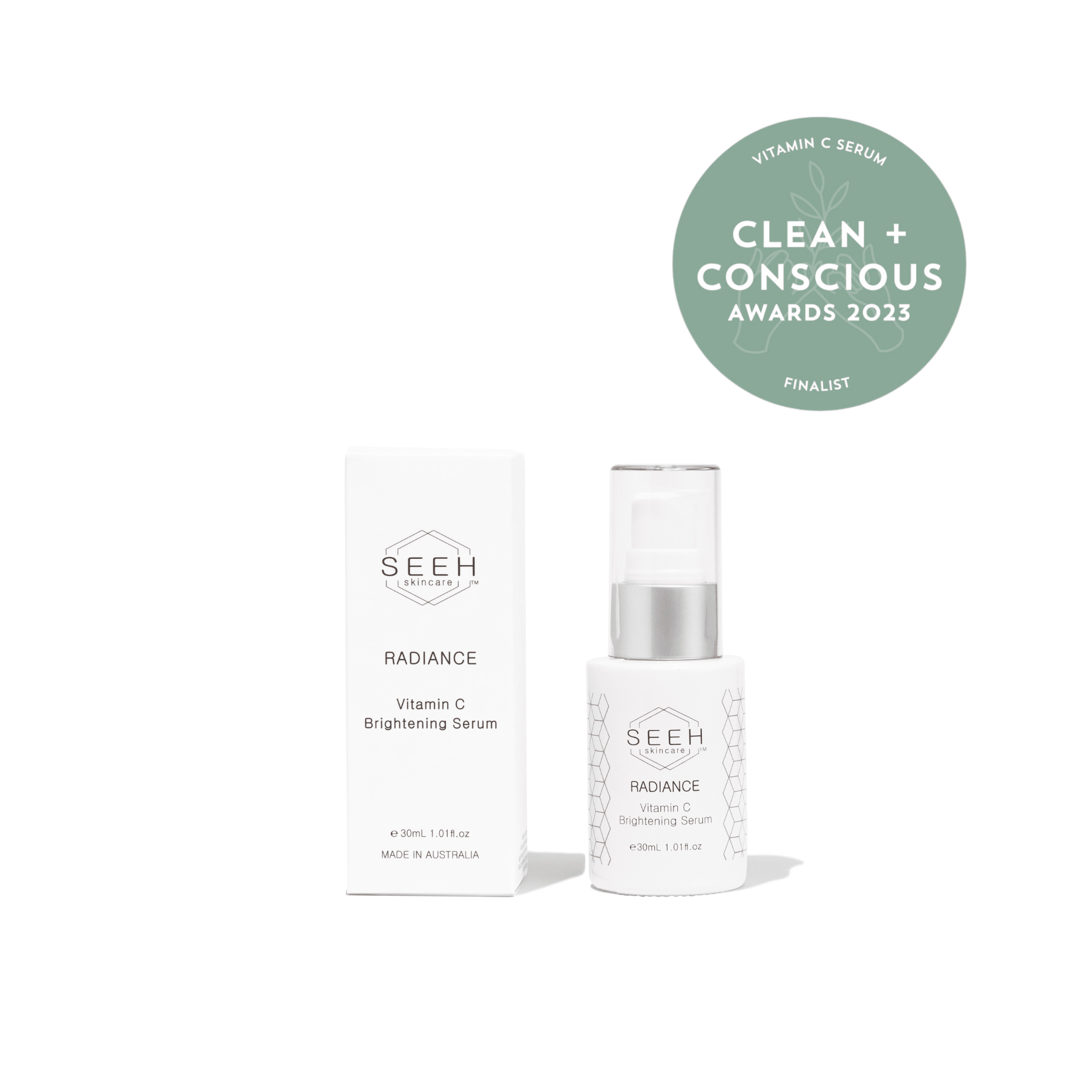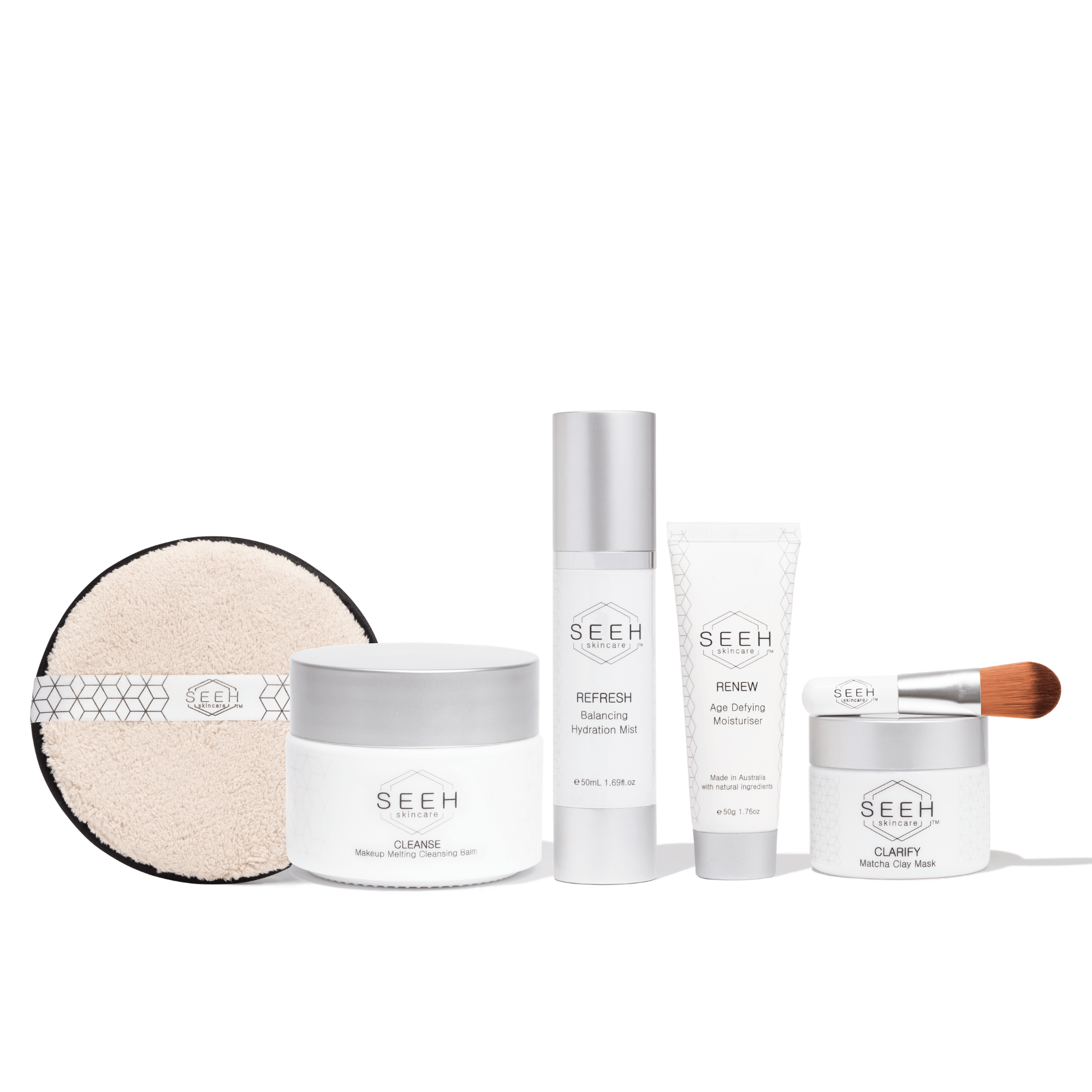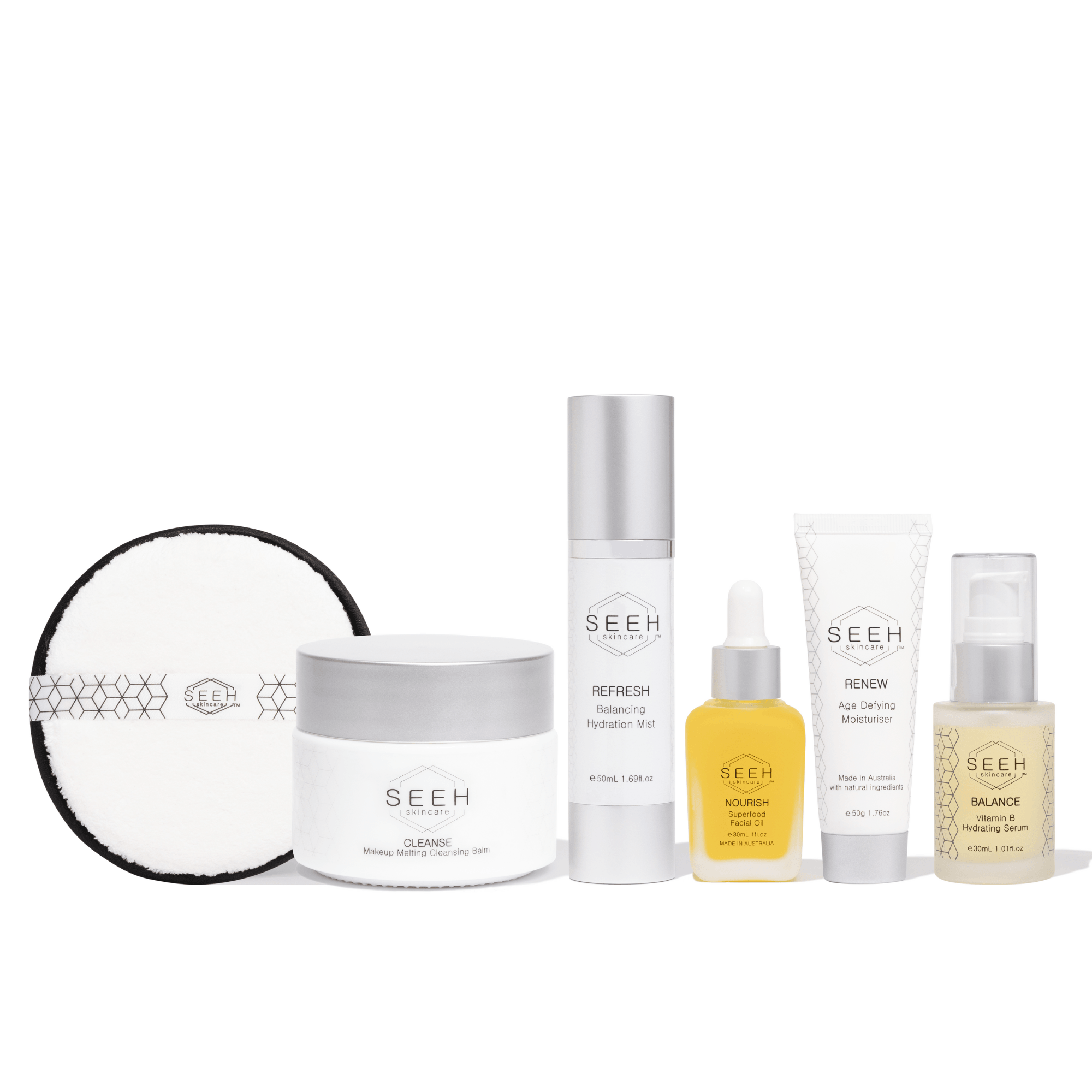Oily, dry, combination, sensitive, normal? Every great skincare routine begins with understanding your skin type. If not, it’s easy to spend a lot of time (and money) using products that aren’t suited to your skin and then feeling disappointed with the results.
Our skin type quick guide will end the frustration and help you get the best from your routine.
Oily skin
Oily skin types have overactive sebaceous glands that produce excess oil meaning pores are more likely to become congested, causing breakouts.Characteristics of an oily skin type -
- Shiny and greasy-looking skin
- Larger pores
- Prone to breakouts and blackheads/whiteheads
- Your makeup seems to ‘slide off’
Using strong products that dry the skin to reduce oil might seem like a good idea, but it’s not. Stripping away oil triggers the skin to produce even more, keeping you stuck in an oily cycle!
Oily skin tips
Regulate oil production
Research shows niacinamide (vitamin B3) can reduce sebum making it ideal for oily skin types. It also helps refine the appearance of large pores! You’ll find niacinamide alongside Hyaluronic Acid in BALANCE Vitamin B Hydrating Serum.
Exfoliate regularly
Exfoliation breaks up congestion and removes debris from the pore to prevent breakouts.
Natural AHAs, derived from sources including fruit, sugar cane and sugar maple, are well suited to oily skin. CLARIFY Matcha Clay Mask is powered by natural AHAs but won’t dry the skin, just leave it brighter and clearer. Prefer a physical exfoliant? SMOOTH Exfoliating Face Polish is formulated with the pore-clearing benefits of rice powder.
Combination skin
Oily in the t-zone but dry on the cheeks? That’s combination skin. It’s common for this skin type to look balanced immediately after cleansing but have a greasy sheen by midday.Characteristics of a combination skin type:
- Oily, shiny t-zone
- Flaky skin around the cheeks and jawline
- Larger pores around your nose and forehead
- Changes with the weather - greasy during the heat and dry in the cold
Combination skin tips
What works for your t-zone might not work for your cheeks so winning with combination skin can take some trial and error.
Customised moisturisation
Consider applying a lighter lotion to your t-zone and a heavier cream for the drier areas to target their individual needs.
Toner
Use a hydrating toner after cleansing to ease oiliness in the t-zone while adding moisture to the drier areas. REFRESH Balancing Hydration Mist is ideal to refresh your skin and manage the midday oil attack!
Mild exfoliant
Using a mild exfoliant can help clear pores in the t-zone while gently removing rough, dry patches on the cheeks. Combine the CLEANSE Makeup Melting Cleansing Balm and SMOOTH Exfoliating Facial Polish for gentle and effective exfoliation.
Dry Skin
Dry skin types produce less sebum. Sebum contains natural moisturising factors (NFM) which include amino acids and humectants that help the skin retain moisture. Without enough sebum to provide a sufficient amount of NFMs, the skin’s barrier becomes weak and cracked. The result? Excessive transepidermal water loss as moisture evaporates through the cracks of the skin and leads to dryness.Characteristics of a dry skin type:
- Flakiness
- Cracks easily
- Feels tight and /or itchy
- Easily irritated
- Smaller pores (less sebum produced)
- Rough texture
- A dull, ashy appearance
Dry skin tips
Dry skin needs a balance of occlusive, emollient, and humectant ingredients to support a healthy skin barrier.
Humectants attract moisture to the skin and emollients smooth rough skin texture. Finally, occlusives create a barrier between the skin and the environment and seal in moisture.
Cleanse gently
Many face cleansers strip the skin of the oils it needs to stay hydrated; sulphate-based foaming cleansers are the worst! Choose a rich cleanser that respects the skin’s natural oils and promotes hydration; our CLEANSE Makeup Melting Cleansing Balm ticks all the boxes.
Apply face oil after moisturising
Face oils offer a natural blend of emollient, and occlusive ingredients. When applied over the top of a hydrating moisturiser, they seal in water and encourage barrier repair. NOURISH Superfood Facial Oil does the job beautifully, with an abundance of vitamins, essential fatty acids and antioxidants.
Boost hydration with a serum
Get much-needed hydration to your skin cells with a serum as they can deeply penetrate the skin. Hyaluronic acid and niacinamide are the real hydration boosters you’ll want to see in a serum. You’ll find these 2 hydration superstars in our BALANCE Vitamin B Hydrating Serum.
Sensitive skin
A weakened barrier and /or hyperactive immune response are the underlying causes of sensitive skin.Characteristics of a sensitive skin type:
- Reacts easily
- Redness and inflammation
- Burning or stinging feeling
- Dryness
Sensitive skin tips
Manage sensitive skin with fragrance-free products that are unlikely to trigger irritation and focus on barrier repair with strengthening and hydrating ingredients. Reactive skin may not be able to tolerate high percentages of active ingredients but this doesn’t mean serums are off limits.
Add Vitamin C Serum to your routine
Vitamin C is a wonderful all-rounder for barrier strengthening benefits. It prevents TEWL (transepidermal water loss) to encourage moisture retention and guards against environmental irritants.
To avoid irritation, choose a type of Vitamin C best suited to sensitive skin. We love sodium ascorbyl phosphate and Kakadu Plum for fragile skin and include both in our RADIANCE Vitamin C Brightening Serum alongside hyaluronic acid and niacinamide.
Try moisturising with face oil
Sensitive skin can be easily overwhelmed and when it comes to skincare sometimes less is best. Try using a light, all-natural facial oil to moisturise. Sensitive skin will simply glow with the moisture-boosting, regenerative benefits of NOURISH Superfood Facial Oil.
Normal Skin
Normal skin could also be described as balanced; it doesn’t act out crazily on either end of the sebum serum - towards dryness or oiliness.Characteristics of a normal skin type:
- Few or no blemishes
- Fine pores
- Not sensitive
- Balanced hydration - not too oily or dry
- Skin feels comfortable
How to care for normal skin
Have a normal skin type? Lucky you! You can take your pick of products to maintain your complexion and treat skin concerns such as signs of ageing and hyperpigmentation or the occasional pimple.A word of warning…even the calmest skin can become sensitised and stressed with the wrong routine. To maintain a strong, healthy skin barrier avoid overwhelming skin with excessive amounts of high percentage active ingredients and beware of over-exfoliating.
All SEEH products are beautifully compatible for normal skin types.
Kim xx






































































